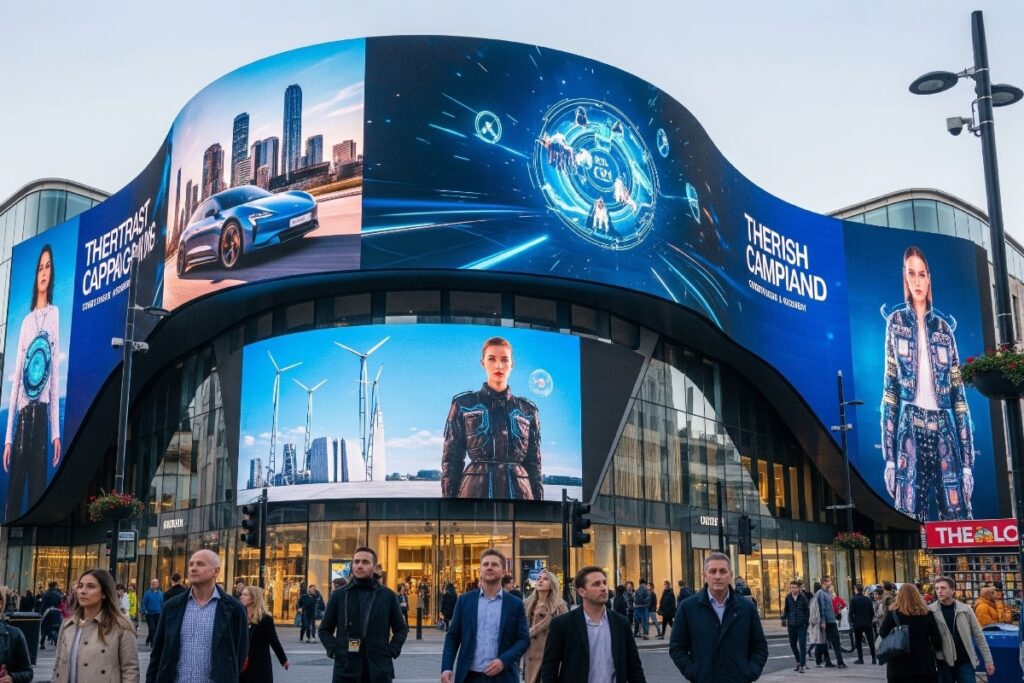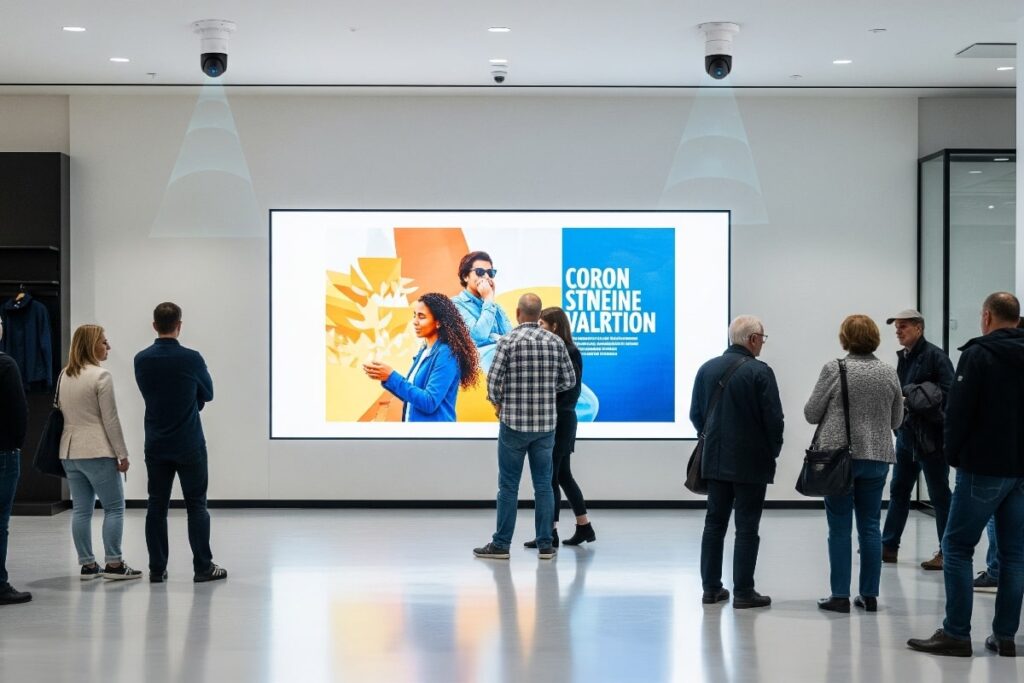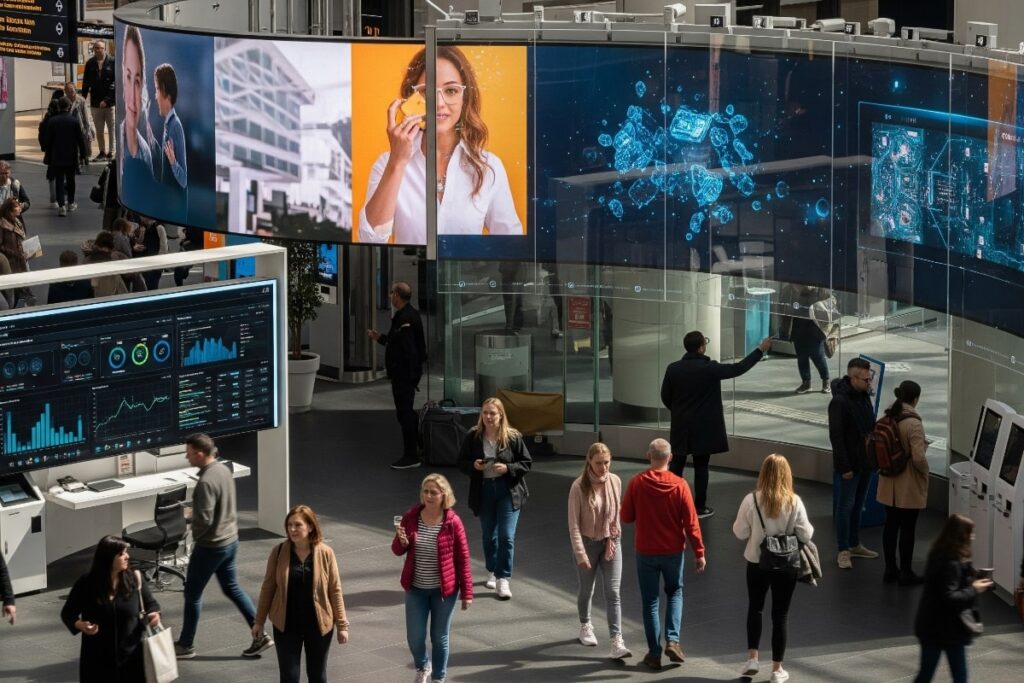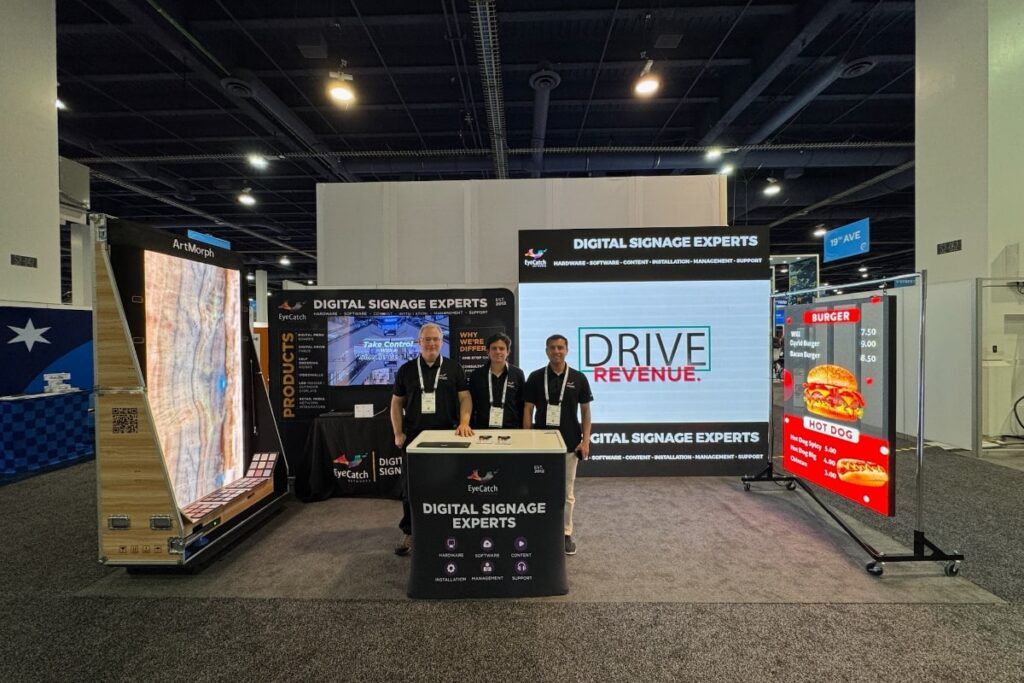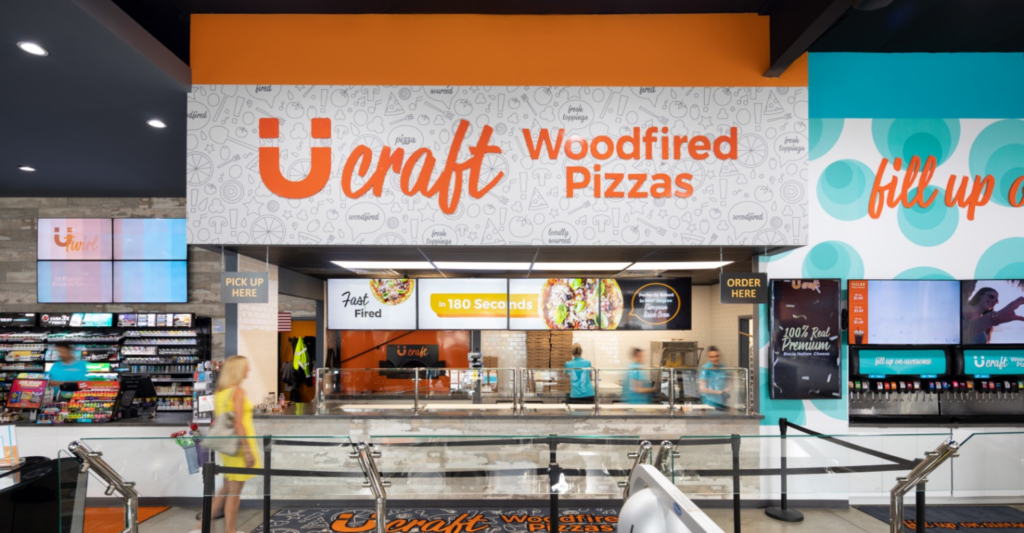I am sure you have come across a lot of Digital signage in retail stores these days. The reason being: it attracts customers and makes shopping easier. Digital signage integration for retail spaces has almost become a necessity. I’ll discuss the top five benefits of using these in your store:
What is Digital Signage?
Digital signage is a modern communication solution that uses digital screens to display dynamic content such as videos, images, text, and interactive media. Unlike traditional static posters, digital signage allows brands to update their messages instantly, engage audiences with eye-catching visuals, and tailor content to specific locations or times of day.
From retail stores and restaurants to corporate offices and healthcare facilities, digital signage has become a versatile tool for improving customer experience, strengthening brand identity, and sharing information more effectively.
Benefits of Digital Signage integration for Retail Spaces and Store
Integrating digital signage into retail environments transforms the way brands connect with their customers. More than just attractive displays, it creates a dynamic shopping experience where messages can be adapted in real time to highlight promotions, showcase new arrivals, and guide purchasing decisions.
Digital signage helps retailers build stronger engagement, increase brand recognition, and drive sales by combining visual impact with strategic communication. Below, we mention some of the key advantages that make this technology an essential asset for modern stores.
1. Attracting More Customers
First things first, Digital signage attracts more eyeballs especially from those who are undecided or distracted, capturing their attention with the screens located in your store. Bright screens and moving graphics instantly grab attention. Most people are more likely to notice a screen when you compare it with a conventional sign. Special deals and promotions can be displayed easily. Customers will know what’s on sale right away.
Seamless digital signage makes stores look modern and fresh. This gives customers a positive impression. When people see well-placed screens, they feel more connected to the brand. It can also make a store look more organized.
2. Sharing Information about your brand
With digital signage and LED screens, you can share information about your brand, attracting customers’ attention and increasing brand recognition, which will set you apart from your competition.
In the past, posters were used, which, in addition to having a negative impact on the environment, cannot be reused and cost more money in the long run.
3. Increase purchasing decisions
With digital signage, information can be updated fast. If prices change, screens can display the new prices immediately. Promotions and seasonal deals can be shared without printing new signs.
This saves time and reduces waste. Traditional signs take longer to create and print. Digital signage is easier to manage. Store managers can update all screens with just a few clicks.
4. Improving the Shopping Experience
Digital signage can make shopping more enjoyable. Customers can see helpful information on the screens. Directions, product details, and even store maps can be displayed. This makes it easier for shoppers to find what they need.
For example, in a clothing store, screens can show outfit ideas. In a grocery store, screens can share recipes using ingredients on sale. Customers appreciate these small touches. Digital signage also creates a more interactive experience. Some screens let customers browse products or check availability. This adds a new level of convenience.
5. Boosting Sales
Digital signage integration for retail spaces helps to increase sales. Screens can promote products at the right time. If a product is on sale, customers will see it immediately. Screens near the checkout can suggest additional items to buy.
Impulse purchases happen more often when customers see last-minute deals. Digital signage can also show product benefits. Videos and animations can explain why a product is a good choice. This can help customers decide to buy.
6. Reducing Costs
Digital signage can save money in the long run. Printing traditional signs costs a lot over time. Digital screens don’t need to be replaced as often. They can be updated instead of reprinted.
While setting up digital signage costs money, the savings grow over time. Stores spend less on materials and printing. The flexibility of digital signage also reduces the need for last-minute printing.
7. Generate loyalty
Digital signage goes beyond displaying products; it creates an emotional connection between a brand and its customers. By showcasing personalized messages, loyalty program offers, or exclusive member discounts directly on in-store screens, retailers can make shoppers feel valued and appreciated.
The ability to highlight customer testimonials, user-generated content, or thank-you messages further strengthens this bond. When customers see that a store recognizes and rewards their loyalty, they are more likely to return, engage more deeply with the brand, and share positive experiences with others. This continuous cycle of recognition and appreciation helps transform casual buyers into long-term brand advocates.
8. Repurpose social media content
Digital signage provides a seamless way to bring your brand’s online presence into the physical store. Retailers can integrate their social media feeds, highlight trending posts, or showcase influencer collaborations directly on large screens.
This not only saves time and resources by repurposing existing content but also gives customers real-time updates about the brand’s digital community. Seeing social proof in-store—such as hashtags, customer reviews, or tagged photos—creates a sense of authenticity and encourages shoppers to engage online.
9. Increase digital presence
Digital signage expands a brand’s digital presence by turning every in-store screen into a powerful communication channel. Beyond traditional marketing, retailers can integrate campaigns that reflect their online branding, incorporate QR codes leading to websites, or display interactive features that connect customers to digital platforms.
This enhances discoverability and reinforces a unified brand identity both online and offline. By leveraging digital signage strategically, retailers ensure that their brand is not only seen but also remembered, positioning themselves as innovative and tech-savvy businesses ready to meet modern consumer expectations.
10. Deliver immersive experiences
One of the greatest strengths of digital signage is its ability to transform ordinary shopping into extraordinary experiences. Through high-resolution visuals, motion graphics, and even interactive touchscreens, retailers can create engaging environments that capture customer attention and spark curiosity. Immersive displays can simulate product use, tell a brand story, or provide personalized recommendations in real time.
This multisensory engagement not only keeps shoppers entertained but also encourages them to spend more time exploring the store. By merging creativity with technology, digital signage allows retailers to craft unique, memorable experiences that leave a lasting impression long after the visit is over.
11. Building Trust with Consistent Messaging
Digital signage helps create trust by keeping information consistent. You can update these screens whenever you want. Making an announcement, sharing happy hours, or perhaps a flash sale or just thanking your customers.
This consistency is especially helpful during busy seasons like holidays or sales. Instead of relying on outdated posters or flyers, stores can share up-to-the-minute updates that shoppers appreciate.
12. Helping Customers Feel Connected
Digital signage for retail stores can make customers feel valued. Screens can welcome shoppers or thank them for visiting. Messages like “Have a great day!” add a personal touch.
Customer loyalty is built by making the shopping experience positive. Interactive screens can let customers sign up for newsletters or loyalty programs. These small features make customers feel appreciated.
Types of digital signage
Digital signage comes in many forms, each designed to meet specific business needs and enhance the customer experience in unique ways. From interactive technologies to large-scale displays, the versatility of digital signage allows retailers and organizations to select solutions that best fit their space, audience, and goals. Below are some of the most common types of digital signage used in modern environments:
Smart Mirrors
Smart mirrors combine reflection with digital technology, displaying personalized content such as product recommendations, promotions, or virtual try-ons. Widely used in fashion and beauty retail, they allow customers to see how items look on them without physically trying them on. This creates a futuristic shopping experience while boosting customer confidence in purchase decisions.
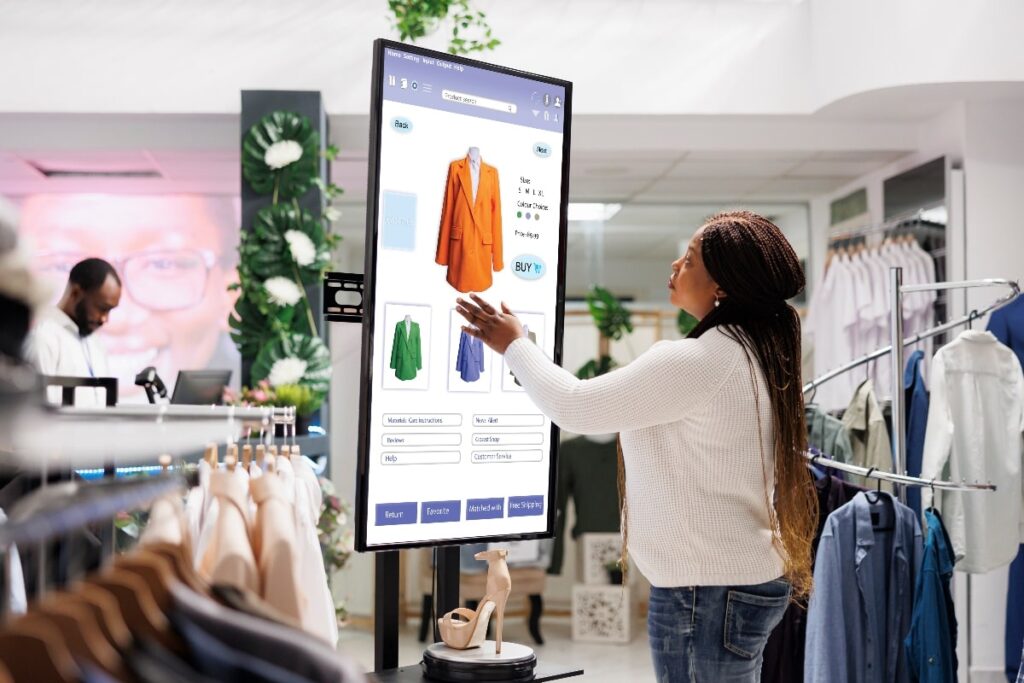
Digital Displays
Digital displays are the most common form of digital signage, ranging from small screens to large monitors. They are versatile tools for sharing promotions, product information, or real-time updates. Easy to update and highly engaging, digital displays are used across retail stores, restaurants, and corporate environments to deliver clear and dynamic messages.
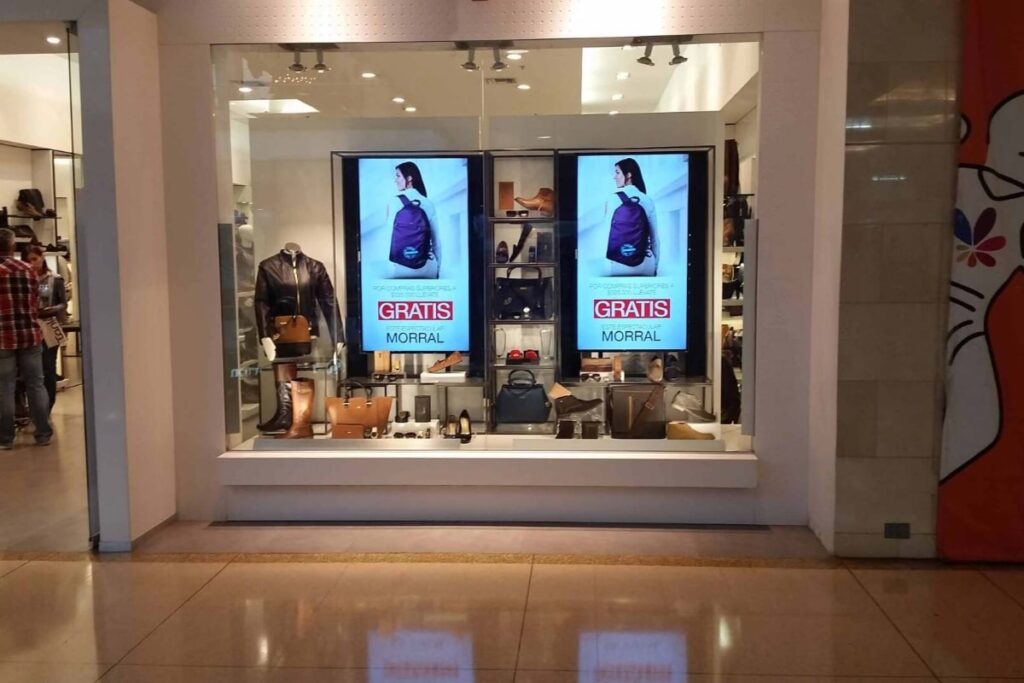
Self-Checkout Kiosks
Self-checkout kiosks combine convenience with digital interaction, allowing customers to complete purchases quickly and independently. In addition to improving efficiency, kiosks can display targeted advertising or upselling suggestions during the checkout process, turning a transactional moment into an opportunity for increased sales and customer satisfaction.

Interactive Screens
Interactive screens encourage customer participation by allowing users to explore products, browse catalogs, or access tailored recommendations with a simple touch. They transform passive viewers into active participants, making the shopping journey more engaging and informative while helping retailers collect valuable customer insights.
Static Digital Signage
Static digital signage refers to screens that display non-interactive yet dynamic content, such as rotating promotions, schedules, or announcements. While not interactive, they still offer flexibility, as the content can be updated instantly compared to traditional printed posters. This makes them cost-effective and impactful for consistent brand messaging.
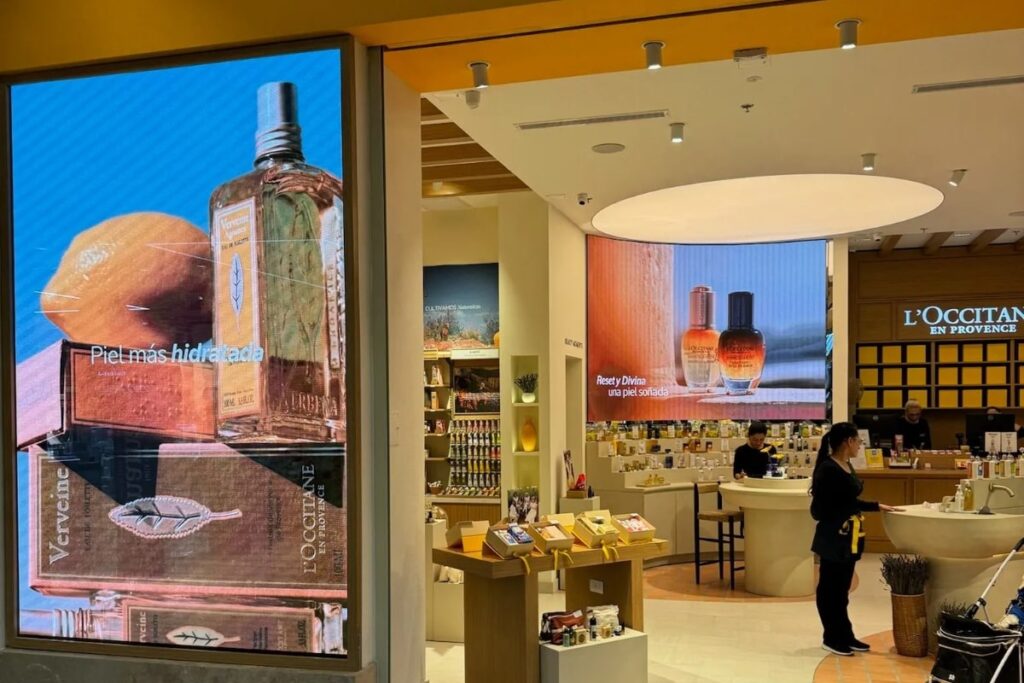
Video Walls
Video walls create a powerful visual impact by combining multiple screens into one large, high-resolution display. Often placed in flagship stores, event venues, or public spaces, video walls grab attention with stunning imagery, immersive storytelling, and a dramatic presence that strengthens brand identity.
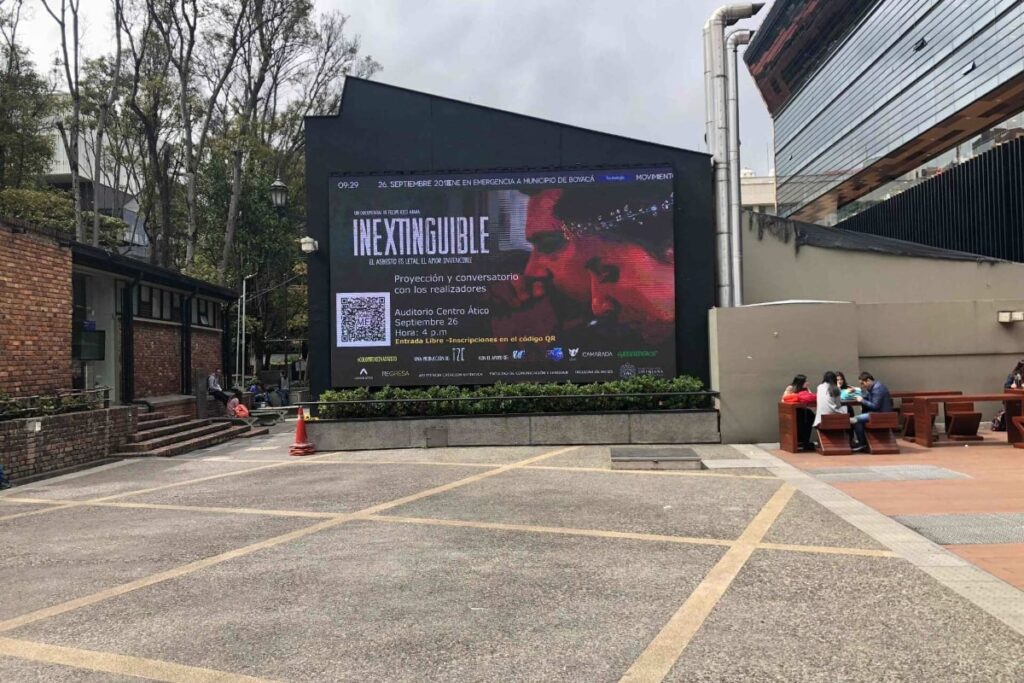
Transparent Digital Signage
Transparent digital signage blends digital content with physical surroundings, allowing viewers to see both the display and the background behind it. Commonly used for product showcases in retail or innovative architectural designs, this technology delivers a futuristic and sophisticated aesthetic that elevates customer engagement.
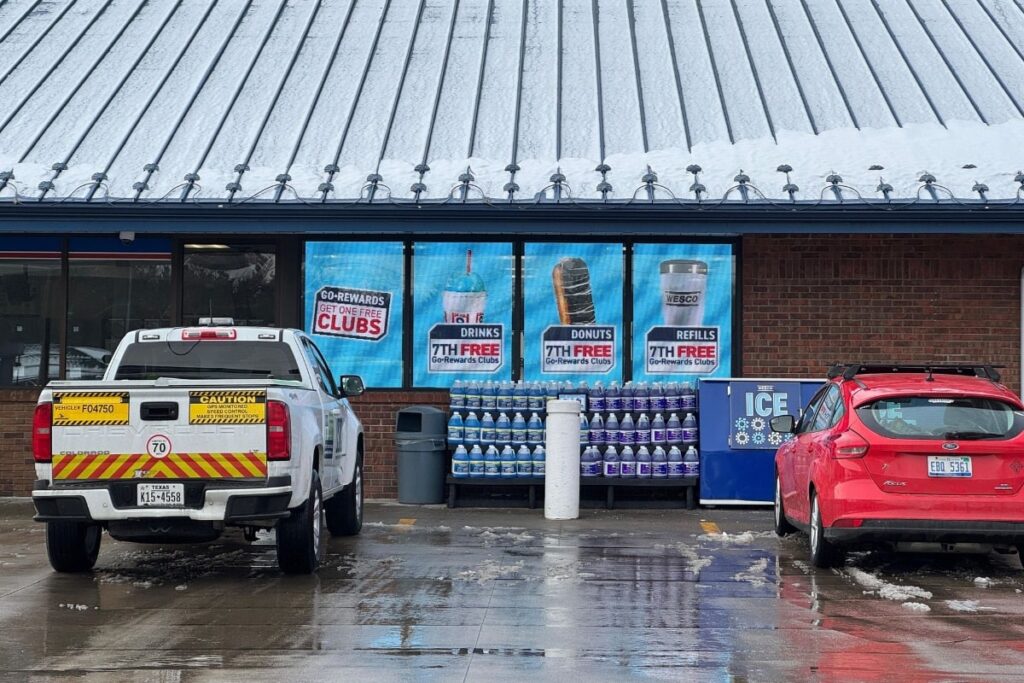
How to Digital Signage integration
Digital signage works wonderfully with different technologies. Screens can sync with mobile apps or loyalty programs. Customers can scan QR codes to learn more about products.
Integration with social media is also possible. You can use the screens to show posts, reviews, or photos. It is much more interactive and is important to build trust and encourage engagement.
Seamless digital signage integration for retail spaces is important. When screens work smoothly, customers have a better experience. Poorly managed screens can cause confusion. For example, outdated or incorrect information might frustrate shoppers.
A good system ensures that updates are quick and accurate. Retailers can manage content easily. Everything looks professional, which builds trust with customers.
Final Thoughts
Digital signage integration for retail spaces has many benefits. You can attract more customers. You can also share information quickly with your potential clients. All in all, it is about creating a better shopping experience. Sales increase, and costs are reduced over time.
Both big and small stores can use digital signage to connect with customers. The technology is easy to manage and works well with other tools.
If you own a store, consider using digital signage. It’s a smart way to grow your business and make shopping more enjoyable for everyone. Discover how EyeCatch’s cutting-edge digital signage solutions can elevate your brand, boost customer engagement, and bring your spaces to life. Explore our services today and see why leading businesses trust EyeCatch to deliver innovation that truly captures attention.




